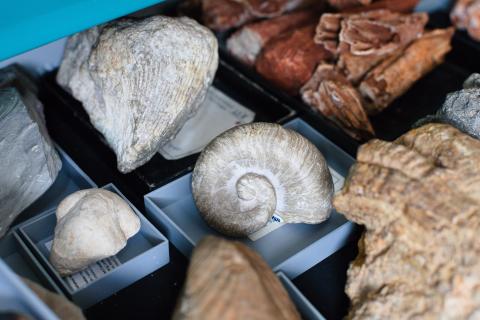The aim of the project is to digitize the examination-relevant objects used in the courses using the latest 3D scanning technology. This enables students to have constant and very flexible access (in terms of time and location) to the objects, which can otherwise only be handed out under supervision during lectures.
The Palaeontology/Stratigraphy research area of the Institute of Geology is working closely with the Virtual Reality and Multimedia research area of the Institute of Computer Science to achieve the project goal. The implementation of the three-dimensionally captured objects in virtual reality (VR) and augmented reality (AR) applications opens up new, innovative possibilities for teachers and students. Various formats that will be tested in the near future are conceivable, such as an interactive learning platform that acts as an interface to OPAL and can be integrated into existing digital teaching. The paleontology/stratigraphy teaching collection is thus a pioneer in this field and the first project at the university to deal with mixed reality in addition to the metadata level.
A structured light scanner from Hexagon (SmartScan) is used to create digital twins of the real objects that are accurate to the micrometer. This provides a high point density, on the basis of which the 3D models can be generated and further processed using various software. The applications (apps) used in the project are developed on site for various end devices, such as iPads and VR glasses. This enables a high degree of adaptability to the requirements of the objects and the digital environment. Specific functions are implemented, such as the optical marking of certain areas of the 3D models and the addition of annotations to the objects.


